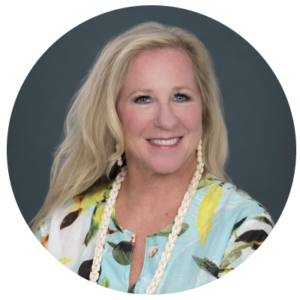
Get your “Voluntary Evaluation Gift Cards” here!
Elite-VB’s secret weapon to aid inflation woes while improving recruiting & retention!
“Give them a gift card” is what an Assistant VP for the largest bank in Hawaii said when asked how businesses should deal with the labor shortage in Hawaii and inflation woes. In an article for Pacific Business News (PBN’s) May 6th edition, he went on to say “It is not necessarily pay, or benefits people are chasing and sometimes it’s not even flexibility. It’s culture, connection, and knowledge.”
I 100% agree on “culture, connection and knowledge” but wondering about the gift card as it relates to inflation. Because I teach and speak about the workplace post-pandemic (as it relates to voluntary benefits for SHRM and Life & Health agents, write eBooks about it), and I see those “wants” at the very top of the “wish list” for attracting talent:
- Better wages
- Flexibility
- Life/Work Balance
- Benefits
No doubt employees at the bank would accept a gift card, but are gift cards what want really to give to your employees to battle inflation? Would it aid in your organization’s ability to attract and retain the talent you need to remain profitable and grow in the coming years (while also being more important than the other ones on the list above)?
No doubt a large banking institution has deeper pockets than small or medium businesses which must manage costs to keep their doors open. Therefore, the bank VP’s advice will fall on deaf ears with entrepreneurs who may be struggling with rising inflation that are chiseling away at profits. As well, chances are he also cannot afford to pay higher wages, buy gift cards, or give more vacation time for those wanting more life-work balance.
In Hawaii, there are over 40,000 jobs currently unfilled, which, for select employers, is not a severe problem as they can find talent out of state (as well as internationally). Due to the pandemic, 50% of employees are desiring to work remotely, and this has created hiring opportunities with recruiting now being a “national marketplace” versus a “local marketplace” (per Ben Godsey of ProService in the same article). However, hiring remote workers will not help employers who need their staff to physically be onsite, which include many service and tourist industries.
While it may seem obvious that 2022 is not 2019, inflation is beginning to strike a big blow for businesses of all sizes and geography. The cause is obvious: spiking gas prices, soaring labor costs, a logistics logjam to name a few. With the price of everything on the rise, companies are facing tough decisions.
When PBN asked business leader “experts” to answer what are some strategies for Hawaii businesses looking to combat the rising inflation that is already dimming growth prospects, as a Voluntary Benefit Broker, I would suggest giving your own organization a “gift” in having an expert re-evaluate your voluntary benefit program’s impact on attracting and retaining talent…which is the biggest post-pandemic challenge facing most businesses…large and small.
Rather than “throwing something against the wall and seeing if it sticks,” it’s imperative that upper management understand the workplace and what concerns employees have:
- Gen Z / Millennials: they are the most “cash strapped” of all generations. 60% of American’s have less than $1000 in savings and these are also the employees that are asking for “financial education”. Employees want to learn about the difference between term and whole life. It’s important that they understand the average age of a heart attack is 49, as well as the risk of cancer is 40% and 13% seek financial care when struggling through a cancer diagnosis. Education is the key and employees want a new approach that isn’t based on “being sold” insurance.
- Post-Pandemic “wish list” has “Benefits” listed in the top five most requested (behind flexibility, life-work balance and pay), so yes, benefits should be evaluated to ensure that they are addressing the needs of the workplace. With over seventy voluntary benefit carriers on the market, benefits in place prior to 2019 often look like dinosaurs compared to the “feature rich” programs on the market now with premiums that are half the cost.
- Mental Health/Substance Abuse: Mental health is the #1 concern for HR managers and businesses are adjusting to address mental health at the workplace. Upper management agrees that mental health is a concern and carriers have risen to the occasion with programs that include benefits for mental health and more.
- Employees also want benefits that speak to Diversity, Equity, and Inclusion (DEI). Voluntary benefits that offer unique benefits that they cannot get anywhere else than your organization is a powerful benefit. Features such as “guarantee issue” (“GI”) provide 100% policy approval meaning all employees qualify regardless of health. Choosing carriers that have benefits that speak to the demographics of the employees (such as telemedicine, childcare, mental health, etc.) allow them to lessen their financial risk for pennies a day.
- Benefits Communication: Gone are the days of face-to-face enrollments. Fortunately, over 72% of employees express satisfaction with digital enrollment experience. Smartphone adoption exploded since 2020 with text being read 90% within the first minutes, meaning you have a powerful tool to reach employees that is in the palm of their hand (i.e., smartphones). Combining that with a powerful, meaningful digital message from upper management as to why the new benefits are being offered can make a tremendous impact. Introducing custom user-friendly websites and landing pages creates a desired digital enrollment “experience” that drives high participation levels as it just takes a “click” (no paper enrollment forms or health questions) to enroll and a dream experience.
So rather than throw a dart at the wall to aid in retaining employees under financial stress due to inflation, I would recommend the following:
- Upgrade your Voluntary Benefit Program: Ensure that it addresses the needs of the workplace above by having a custom designed voluntary offering (critical illness, accident, life, disability, and hospital plans are most popular) that include high limits for “GI”, rich features and premiums that should be half the cost of traditional individual products offered by carriers such as Aflac, Colonial Life or American Heritage. When employee-paid premiums are lowered, employees can either take home a raise, or buy more protection for the same premium per paycheck. Right there, you are taking a bite out of inflation without even having to buy a gift card!
- Focus on Education versus “selling”: employees want financial education. When employees are educated at to the risks of cancer, the fact that stroke is the leading cause of disability, etc. you are providing them the education to purchase programs that make a difference in their lives. There cannot be anything more inclusive: to educate employees (young and old) as to the need for programs that provide a financial safety net and then allow them to “elect” the benefits that work for them and their families.
- Bring in benefits that help HR recruit: I teach a Society of Human Resource (SHRM) course on “Leveraging Voluntary to Aid in Recruiting and Retention” and I can tell you, the need for (fresh) voluntary is powerful. When the CHRO brings in voluntary benefits that allow a 28-year-old insulin diabetic single Mom the ability to buy four plans (disability, accident, critical illness, and life coverage) for $2 a day (with premiums that will never increase), you have given her peace-of-mind. Prior plans would have excluded her due to her health. No more: you have now added a powerful tool that will help employees that cannot get coverage elsewhere. Add into that wellness reimbursements on two of the plans, and her premium cost goes down to $1/day. Yes, this is better than a gift card, and lastly
- Communicate effectively: No doubt this bank offers voluntary benefits to their over 10k employees. But if the benefits communication is boring, “salesy,” relies on “face-to-face,” with 70% of an enrollment dependent on pre-communication, chances are the results are going to be boring. Or, if the benefits enrollment is “passive”, without much or any effort to communicate and educate, that’s even worse. I propose a shift: have someone skilled tell a great story about your organization’s desire to improve their benefit offering through custom videos, landing page, website, and more. A great “campaign” that is told to 100% of employees will contribute to an organization’s culture, connection, and knowledge (all three of these were on the Bank VP’s list and you have now just crossed them off).
It’s important to make the distinction that “smart voluntary” means holding the overall “mission/vision” of each organization as the foundation for the DESIGN of an effective voluntary strategy post-pandemic. Meaning: if your company’s primary foundation is “culture, connection, and knowledge”, ensure your voluntary program speaks to this while also speaking to inflation, gun violence (yes, accident plans have $2k benefits for a gunshot wound), telemedicine, wellness and more. It’s not one OR the other…expect both. Great voluntary broker will understand the unique foundation of EACH organization and build a successful program while addressing new needs of a unprecedented one-in-a-century pandemic combined with potential inflation.
To summarize, management does not have to throw a dart at the wall and try and figure out what magic bullet will aid in filling those 40,000 jobs. Not only are voluntary benefits no cost to an organization, but they are addressing bigger issues such as DEI, employees living paycheck-to-paycheck, wellness, etc.
As a 27-year veteran in voluntary design, build and servicing, I have created a simple “Square Peg” checklist in my website that is an easy way for companies to determine if their “pre-pandemic” voluntary benefit program is rising to the needs of the post-pandemic workplace. It is a starting point that can open the discussion as I truly am bullish on voluntary in 2022 in all aspects: for the employer, for the employees, for broker partners, as it solves so many challenges such as inflation and hiring at no cost to the organization…and what a gift is that!
It is like the story: give a man a fish, feed him for a day. Teach him how to fish, you feed him for life. Nah, I would not give a gift card…I would give them a gift of electing coverage that will give them the gift of “peace of mind” to know they can financially recover from whatever life brings their way.
However, I must thank the bank VP. I love this “gift card” concept so much, I have decided to give him a gift card for one hour (free) consultation to evaluate his voluntary benefit program. While I am at it, I am planning to pass them out to as many broker and business owners I can as “fresh voluntary” …done right…will aid not only in inflation but be there for both employers AND employees to address the potentially rocky road we all may face in 2022 and beyond.
Thanks for the idea!
Pamela




